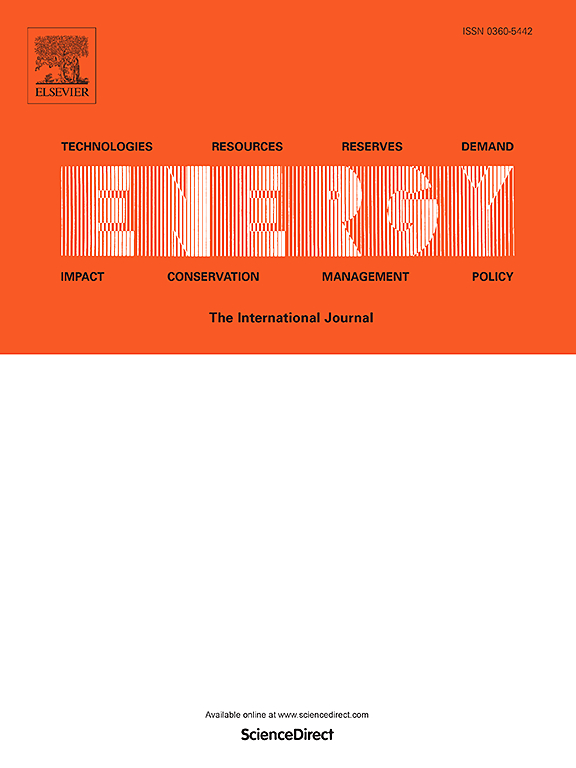Characteristics of cement-based thermo-concretes containing capric acid impregnated hemp for thermal energy storage and sound isolation in buildings
IF 9
1区 工程技术
Q1 ENERGY & FUELS
引用次数: 0
Abstract
Enhancing the lightweight structure, insulation, and thermal storage capacity of concrete is critical for energy efficiency and environmental impact reduction. The innovative application of using waste hemp shives as a phase change material (PCM) carrier in cementitious composites was performed in this study to enhance sustainable construction practices. Although previous studies have incorporated lightweight aggregates and PCMs, challenges such as PCM leakage and the reliance on synthetic materials have limited their effectiveness. This study utilized waste hemp shives as a natural porous support for capric acid (CA) PCM in diatomite-based lightweight concrete, offering an eco-friendly and leakage-resistant solution with improved thermal and acoustic performance. No leakage was observed in shape-stabilized hemp/CA composites with 45 wt% CA. The melting and solidification temperatures were determined as 30.6 °C and 28.7 °C, with corresponding enthalpy values of 80.9 and 80.8 J/g, respectively. Concrete composites containing hemp/PCM reduced indoor temperatures by up to 4 °C compared to control samples. Moreover, composites with 30 % hemp/PCM content achieved sound absorption coefficients up to 0.6 and transmission loss values exceeding 24 dB, demonstrating their dual functionality for thermal energy conservation and acoustic comfort in building applications.
含癸酸浸渍大麻的水泥基热混凝土在建筑物中的储热和隔声特性
增强混凝土的轻质结构、隔热和储热能力对于提高能源效率和减少环境影响至关重要。本研究将废麻片作为相变材料(PCM)载体应用于胶凝复合材料中,以增强可持续建筑实践。尽管之前的研究已经结合了轻质骨料和PCM,但PCM泄漏和对合成材料的依赖等挑战限制了它们的有效性。本研究利用废大麻片作为硅藻土基轻质混凝土中癸酸(CA) PCM的天然多孔支撑,提供了一种环保、防泄漏的解决方案,并改善了热学和声学性能。CA含量为45 wt%的形状稳定型麻/CA复合材料无泄漏现象,其熔融和凝固温度分别为30.6°C和28.7°C,对应的焓值分别为80.9和80.8 J/g。与对照样品相比,含有大麻/PCM的混凝土复合材料可将室内温度降低4°C。此外,含有30%大麻/PCM的复合材料的吸声系数高达0.6,传输损耗值超过24 dB,显示了其在建筑应用中的节能和声舒适的双重功能。
本文章由计算机程序翻译,如有差异,请以英文原文为准。
求助全文
约1分钟内获得全文
求助全文
来源期刊

Energy
工程技术-能源与燃料
CiteScore
15.30
自引率
14.40%
发文量
0
审稿时长
14.2 weeks
期刊介绍:
Energy is a multidisciplinary, international journal that publishes research and analysis in the field of energy engineering. Our aim is to become a leading peer-reviewed platform and a trusted source of information for energy-related topics.
The journal covers a range of areas including mechanical engineering, thermal sciences, and energy analysis. We are particularly interested in research on energy modelling, prediction, integrated energy systems, planning, and management.
Additionally, we welcome papers on energy conservation, efficiency, biomass and bioenergy, renewable energy, electricity supply and demand, energy storage, buildings, and economic and policy issues. These topics should align with our broader multidisciplinary focus.
 求助内容:
求助内容: 应助结果提醒方式:
应助结果提醒方式:


